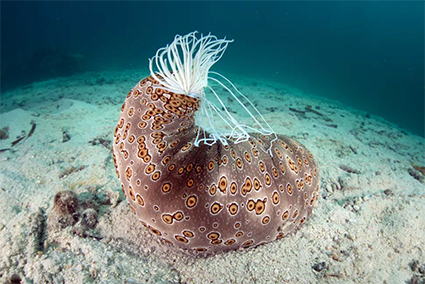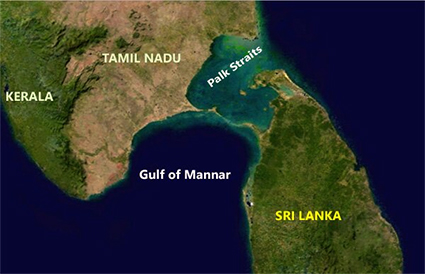Sea Cucumber | 20 Sep 2021
Why in News
Recently, the Indian Coast Guard (ICG) has seized two tonnes of sea cucumber, a banned marine species, in the Gulf of Mannar and Palk Bay areas in Tamil Nadu.
Key Points
- About:
- Sea cucumbers are marine invertebrates that live on the seafloor found generally in tropical regions. They're named for their unusual oblong shape that resembles a fat cucumber.

- There are about 1,250 species of sea cucumber, all of which belong to the taxonomic class Holothuroidea.
- This class falls under the Echinodermata phylum, which also includes many other well-known marine invertebrates, such as sea stars, sea urchins and sand dollars.
- They are crucial to maintain the balance of ocean habitats.
- Sea cucumbers are marine invertebrates that live on the seafloor found generally in tropical regions. They're named for their unusual oblong shape that resembles a fat cucumber.
- Significance:
- They are an integral part of the coral ecosystem as one of the main by-products of the sea cucumbers digestion of sand is calcium carbonate and this is essential for the survival of the coral reefs.
- They act like garbage collectors of the ocean world, and they recycle nutrients, thus playing an important role in keeping coral reefs in good condition.
- Threats:
- Illegal Trading and smuggling since the species is high in demand across south-east Asia, mainly China, for food and traditional medicine.
- Protection:
- IUCN Red List: Brown Sea Cucumber (Endangered), Blackspotted Sea Cucumber (Least Concern), Blue Sea Cucumber (Data Deficient), etc.
- Wildlife Protection Act, 1972: Schedule I.
- Conservation Efforts:
- In 2020, the Lakshadweep Islands administration created the world’s first conservation area - 239 sq. km - for sea cucumbers.

